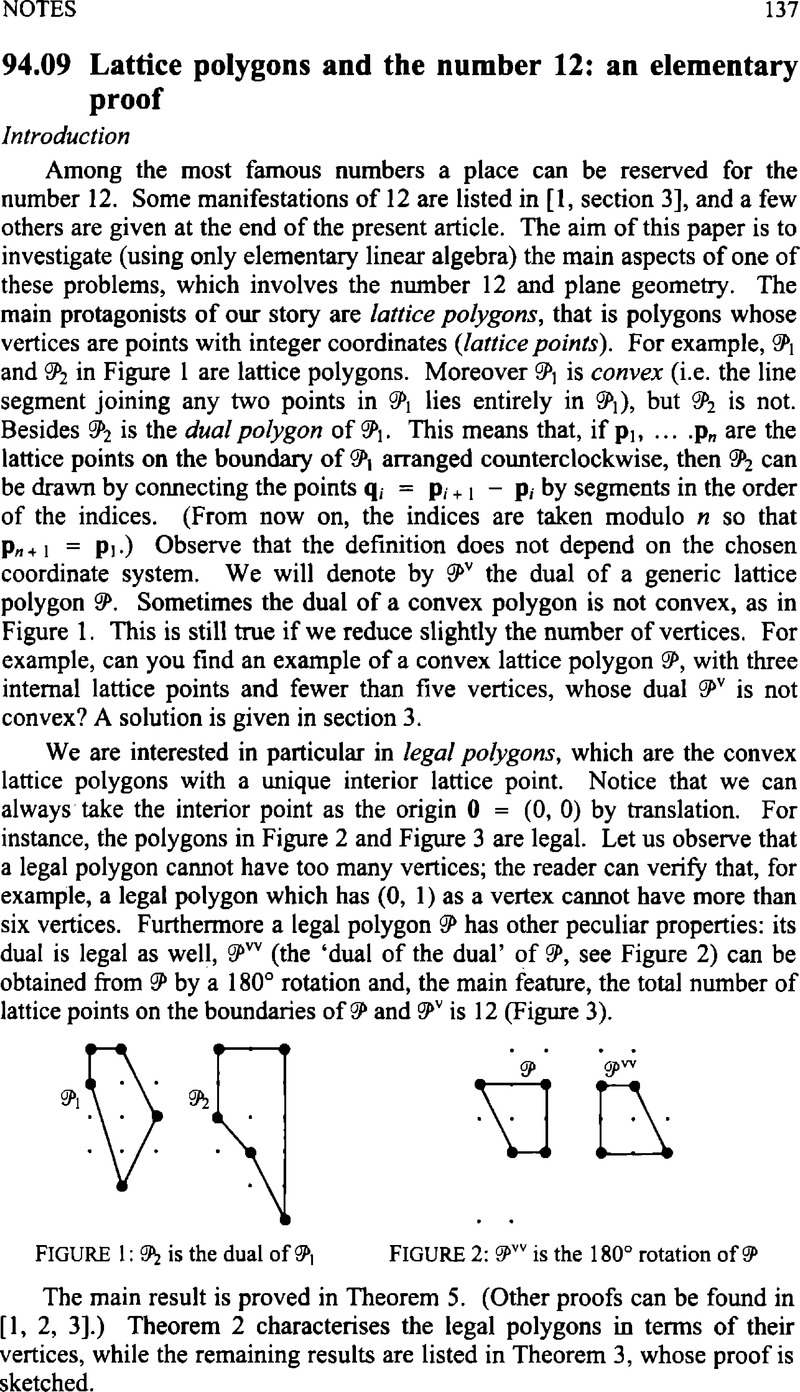No CrossRef data available.
Article contents
94.09 Lattice polygons and the number 12: an elementary proof
Published online by Cambridge University Press: 23 January 2015
Abstract
An abstract is not available for this content so a preview has been provided. Please use the Get access link above for information on how to access this content.

Information
- Type
- Notes
- Information
- Copyright
- Copyright © The Mathematical Association 2010
References
1.
Poonen, B. and Rodriguez-Villegas, F., Lattice polygons and the number 12, Amer. Math. Monthly
107 (2000), pp. 238–250.Google Scholar
2.
Burns, J. M. and O'Keeffe, D., Lattice polygons in the plane and the Number 12, Irish Math. Soc. Bulletin
57 (2006), pp. 65–68.Google Scholar
3.
Repovš, D., Skonpenkov, M. and Cencelj, M., A short proof of the twelve-point theorem, Mathematical Notes
77 (2005), pp. 108–111.Google Scholar
4.
Stone, M. G., A mnemonic for areas of poloygons, Amer. Math. Montly
93 (1986), pp. 479–480.CrossRefGoogle Scholar
5.
Haigh, G., A ‘natural’ approach to Pick's theorem, Math. Gaz.
64 (October 1980), p.173.Google Scholar
6.
Varberg, D. E., Pick's theorem revisited, Amer. Math. Monthly
92 (1985), pp. 584–587.Google Scholar
7.
Fomin, D., Genkin, S. and Itenberg, I., Mathematical Circles, American Math. Soc. (1996).Google Scholar

